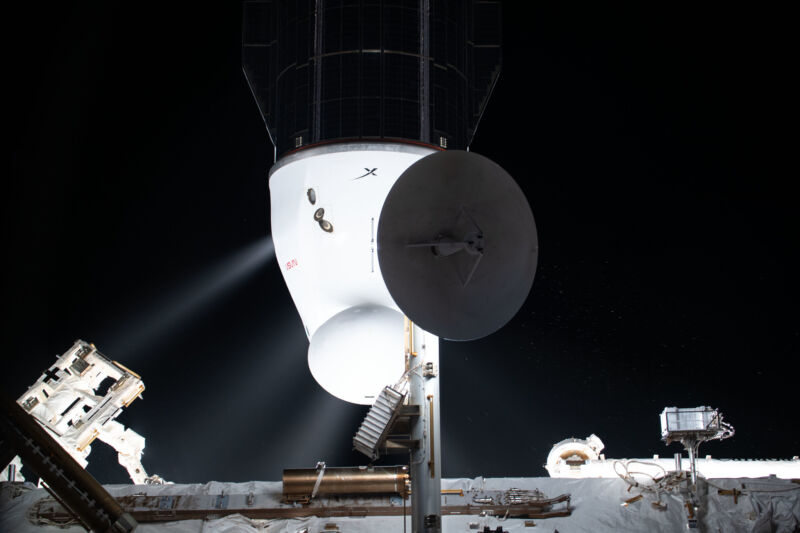
NASA and SpaceX have delayed the launch of a Cargo Dragon spacecraft for at least a couple of weeks due to an issue during the prelaunch loading of hypergolic propellants.
The space agency had been planning to launch the spacecraft on June 12 but announced the delay in an email on Monday evening to reporters.
"During propellant loading of the Cargo Dragon spacecraft, elevated vapor readings of mono-methyl hydrazine were measured in an isolated region of the Draco thruster propulsion system," the space agency's statement said. "The propellant and oxidizer have been offloaded from that region to support further inspections and testing."
Draco thrusters provide on-orbit maneuvering propulsion for the Dragon spacecraft. NASA said that it is working with SpaceX to identify the source of the elevated readings and take any corrective actions. On Tuesday morning, astronauts on board the International Space Station were told by Mission Control in Houston that the launch date would slip until at least June 28.
This is not a new Dragon vehicle. Designated Dragon "C208," this vehicle has previously flown two supply missions, both in 2021. It is an upgraded version of the original Cargo Dragon spacecraft, known as "Cargo Dragon 2."
NASA will want to study this issue carefully because the thruster system in this Cargo Dragon version shares a lot in common with Crew Dragon, which also uses Draco thrusters and the same hypergolic propellants. There should be plenty of time for this work, however, as the next Crew Dragon launch, carrying the "Crew 5 mission," is not scheduled until September.
These Draco thrusters have significantly less thrust than the SuperDraco thrusters that are used to power the launch escape system on Crew Dragon. During a test in April 2019, a leak of oxidizer just prior to ignition of these SuperDraco thrusters led to an explosion that destroyed a spacecraft. No one was injured.
Cargo Dragon does not have these SuperDraco thrusters, but nonetheless, NASA and SpaceX will want to understand all of the issues pertaining to the latest leak before launching supplies or people.
https://news.google.com/__i/rss/rd/articles/CBMiYmh0dHBzOi8vYXJzdGVjaG5pY2EuY29tL3NjaWVuY2UvMjAyMi8wNi9uYXNhLWRlbGF5cy1jYXJnby1kcmFnb24tZmxpZ2h0LWR1ZS10by1hLXByb3BlbGxhbnQtaXNzdWUv0gFoaHR0cHM6Ly9hcnN0ZWNobmljYS5jb20vc2NpZW5jZS8yMDIyLzA2L25hc2EtZGVsYXlzLWNhcmdvLWRyYWdvbi1mbGlnaHQtZHVlLXRvLWEtcHJvcGVsbGFudC1pc3N1ZS8_YW1wPTE?oc=5
2022-06-07 14:54:37Z
1461253660
Tidak ada komentar:
Posting Komentar